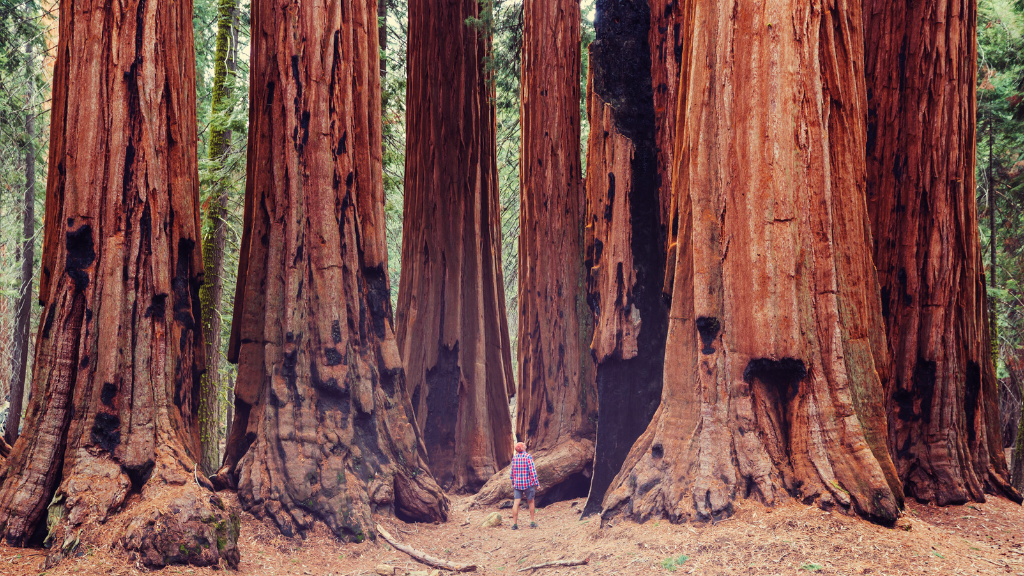Firefighters are gaining ground in the fight to protect Yosemite’s giant sequoias, but the weather is not helping

(CNN) - With giant sequoias under threat from a wildfire spreading at Yosemite National Park in California, firefighters are in a race to protect them and a nearby community as more dry hot weather bears down on the region.
Progress has been made in battling the Washburn Fire, which is 22% contained and has charred at least 2,720 acres, according to the fire management site InciWeb.
More than 500 fire crew personnel are on scene, some of whom are using bulldozers to clear lines while others are creating backfires -- a preemptive controlled burn of brush and dead wood to starve the blaze of flammable material -- to protect the park and its Mariposa Grove, home to hundreds of giant sequoias.
State Highway 41 is being used to stop the fire's western advancement, with fire crews cutting away at brush to minimize any chances of the fire leaping across. Such efforts are "working very well currently," said Matt Ahearn, Operations Section Chief with California Interagency Incident Management Team 13.
The eastern portion of the fire is causing the most concern with spot fires, which are intense but moving slowly, Ahearn said.
"If you look at our progression maps, this fire is not moving quickly at all," he said.
"What it's doing is producing extreme heat and just sitting there and billowing and just pumping smoke out of it, which is producing the large smoke columns you are seeing from many miles away."
Ahearn said the firefighting plan is going well.
The fire is staying on the outskirts of Mariposa Grove and is not expected to advance any further in, he said.
Efforts however are complicated by an expected run of dry, hot weather that can fuel the blaze.
High temperatures in the area are expected to reach into the 90s Fahrenheit with no precipitation forecast, according to the National Weather Service.
Sprinkler system around Grizzly Giant sequoia
To get ahead of the spread of the fire, which was first spotted on July 7 near the park's Washburn Trail and doubled in size over the weekend, aircraft are being used to cover areas with fire-retardant chemicals.
And fire crews have installed a sprinkler system to dampen the ground around the 209-foot-tall Grizzly Giant sequoia, with water from a small pool feeding sprinklers set up near the tree's base, footage from Yosemite Fire and Aviation Management shows.
"We're trying to give it some preventative first aid really, and make sure that when the fire -- if the fire -- comes over here, that this tree is protected," said Garrett Dickman, a forest ecologist with the National Park Service at Yosemite.
Although giant sequoias are resilient and can withstand some amount of wildfire, blazes this large can be too much, Yosemite spokesperson Scott Gediman told CNN.
"Fire is important, in fact it's critical for giant sequoias for them to have the seeds come out of the cones, to regenerate the soil, provide habitat for animals. ... But it's these high-intensity fires that are causing the damage," he said.
The cause of the fire has yet to be determined, but park superintendent Cicely Muldoon said Monday, "There was no lightning on that day, so it's a human-start fire and it's under investigation."
To the northwest, campgrounds and residents of the community of Wawona have been forced to leave due to their proximity to the fires and a mandatory evacuation order remains in effect.
The southern entrance to Yosemite has been closed.
Structures under threat include the Wawona Hotel, the park's oldest hotel established in 1856.
Fire management teams have also wrapped the historic Galen Clark cabin in protective foil, Gediman said.
Officials said Monday that residents would be able to return when the threat of fire has been turned back as well as when the danger of dead trees falling onto roads has subsided.
"One hundred percent suppression, we're putting this one out," Incident Commander Josh Boehm told residents.
"We're working day and night to get you and our firefighters home safely."